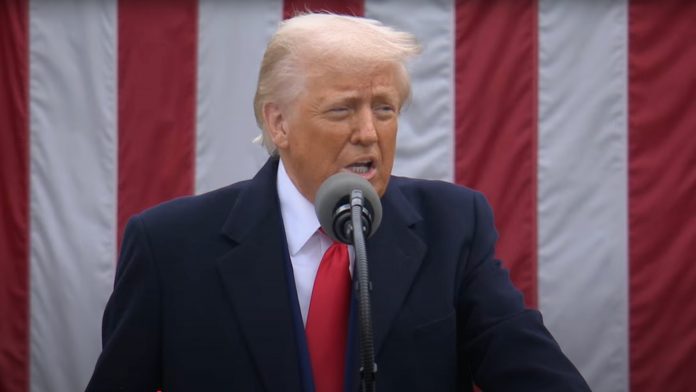President Donald Trump formally announced that the United States will impose a 25% tariff on all foreign-made automobiles, effective at midnight on April 3, 2025. Speaking from the White House Rose Garden, the president called the announcement a “declaration of economic independence,” highlighting its significance for America’s future prosperity.
“Today is Liberation Day,” Trump declared, “April 2nd will forever be remembered as the day we make America wealthy again.”
In addition, President Trump formally announced that the United States will enforce new, more aggressive reciprocal tariffs aimed at countries with unfair trade practices. Under this new system, the U.S. will impose tariffs based on the import duties charged by other nations, along with additional considerations for non-monetary trade barriers. While the baseline tariff will start at 10%, rates will vary by country.
For example, China currently charges the U.S. 67%, so the U.S. will charge China 34%. The European Union, which charges 39%, will face a 20% tariff. Other nations will see similarly tailored tariffs: Vietnam (90% to 46%), Taiwan (64% to 32%), Japan (46% to 24%), and India (52% to 26%). South Korea, Switzerland, and South Africa are among other countries with adjusted tariffs. If nations want to avoid these tariffs, Trump emphasized they must invest in the United States and eliminate their tariffs against U.S. goods.
In addition to the tariff announcements, President Trump announced a tax deduction for interest paid on auto loans for U.S.-made vehicles. Although specific details on eligibility and implementation remain unclear, Trump emphasized that further information will be released soon, including other potential tax cuts to benefit American consumers and manufacturers.
President Trump addressed the broader issue of national security, emphasizing that the U.S. imports critical items, from ships (where America was once a leader) to antibiotics, computers, and phones. He highlights how it is a national security issue, pointing to the vulnerabilities created by relying on foreign sources for essential products.
Trump stressed that this initiative was not meant to be a full reciprocal response but rather what he calls a “kind reciprocal tariff” system aimed at leveling the playing field. He underscored that the new tariffs would strengthen competition, lower consumer prices, and revitalize U.S. manufacturing. The president also condemned what he called “non-monetary trade barriers” that block American businesses and intellectual property theft.
Further reinforcing his message, Trump highlighted several major companies that are committing to invest in the U.S. Apple, he announced, will spend $500 billion, while OpenAI and Oracle are set to invest $500 billion immediately. Taiwan’s TMSC is investing $200 billion in the U.S. to sidestep the tariffs, and Meta has pledged $55 billion in new investments. Trump also noted that companies across various industries, from technology to manufacturing, are making significant investments in the U.S. that will total over several trillion dollars.
The new tariff policy is expected to have a profound impact on global trade, with industries and trade partners awaiting further details. The White House will likely release a full list of the new tariffs online soon, further clarifying which countries will be affected and by how much. The administration’s bold stance on trade reflects Trump’s ongoing focus on revitalizing American industry and safeguarding national security interests.



